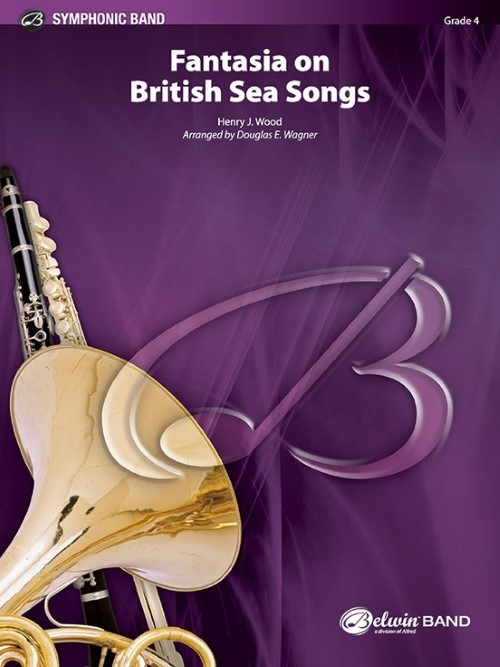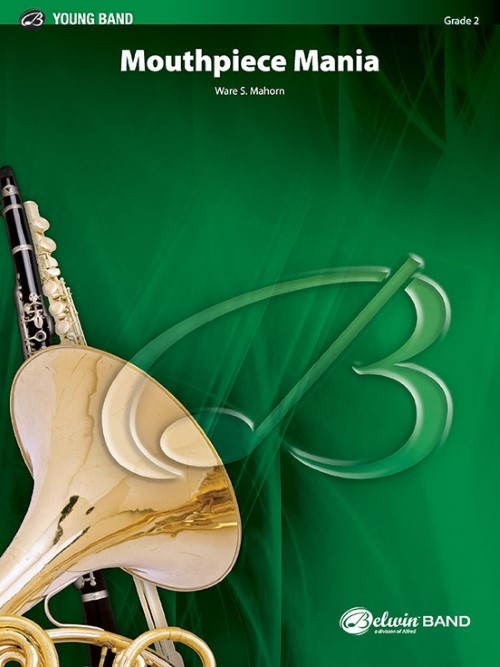Results
-
 £82.95
£82.95Fantasia on British Sea Songs (Concert Band - Score and Parts) - Wood, Henry J. - Wagner, Douglas E.
Sir Henry J. Wood (1869 - 1944) wrote his Fantasia on British Sea Songs in 1905 to commemorate the 100th year anniversary of Admiral Lord Nelson's defeat of the French and Spanish fleets at the Battle of Trafalgar.This wonderful concert band arrangement incorporates five of Wood's selected themes:The Saucy ArethusaTom BowlingJack's the LadFarewell and AdieuSee, the Conquering Hero ComesYou'll recognise the themes, if not the original names! A cherished addition to the repertoire certain not to be missed!Duration: 8:00
Estimated dispatch 7-14 working days
-
 £53.95
£53.95Mouthpiece Mania (Concert Band - Score and Parts) - Mahorn, Ware S.
From the sublime to the "you know what"! The melodies are from classic literature, but you can be guaranteed that the performance is not. Your entire trumpet section performs sans instruments (yes, mouthpieces only)! Your audiences will react as never before. Just see if even you can keep a straight face (and think of all the money that can be saved not having to use valve oil)! Duration: 2.30
Estimated dispatch 7-14 working days
-
 £64.35
£64.35Heaven's Light
Very impressive slow and expressive composition that features close, lush harmonies and memorable melodies. Includes effective clarinet and flute solos that are accompanied by vibes and marimba (these parts maybe played by piano & synthesizer if mallet percussion not available). Includes unique textures not found in the usual band or wind ensemble pieces and is a wonderful choice for any performance situation. VERY HIGHLY RECOMMENDED!
Estimated dispatch 7-14 working days
-
 £104.99
£104.99Hine e hine Wind Band Set (Score & Parts)
E tangi ana cow, Hine e Hine ... Do not cry, girl, do not cry ... Every culture has its own melodies to comfort children to sleep. Jan Gerrit Adema made a beautiful arrangement of this lovely folk melody of the Maori, also called the national anthem of New Zealand. 04:45
Estimated dispatch 7-14 working days
-
 £76.99
£76.99Saxophones in the Light Wind Band Set (Score & Parts)
The title Saxophones in the Light describes what the piece does - it puts not one, not two, but three of your saxophones into the limelight! At the same time Harm Evers also manages to bring out the best in your concert band. This exciting and inventive piece will give all your musicians a chance to shine. 0:03:00
Estimated dispatch 7-14 working days
-
£117.50
King Karl King - Henry Fillmore
Originally written for a film (The Big Brass Band) that was never made, this terrific but little-known march turned out to be the last march that Fillmore would write. Unusually rich in harmony, it was not published in Fillmore's lifetime. He had asked that it be named After his friend and fellow march composer, Karl L. King, if the movie was not produced.
Estimated dispatch 7-14 working days
-
 £53.50
£53.50Four Pictures - Árpád Balázs
The teachers under whom rpd Balzs (b.1937) studied composition - Ferenc Farkas, Aram Khachaturian and Goffredo Petrassi - each independently formed the opinion that with his lyrical gift rpd Balzs's true creative field would be that of choral music and wind ensembles. Their early predictions are borne out by the roughly two hundred and fifty works for choir and almost twenty for wind orchestra that the composer has since produced. It is interesting that in the suite entitled Ngy kp (Four pictures) the stylistic features of these two related musical fields are united. In it the wind instruments sing! It was not by chance that the expansive second movement was given the title Cantilena, while the slightly livelier but just as lyrical third movement was entitled Arietta. The opening movement of the work is a stridently jolly, energetic Indul (March), but not one of the rigidly military kind: the 6/8 rhythm contributes to its light-hearted character. This music is avowedly akin to the ballet music of Prokofiev. This choice series of four character pieces is crowned by Jtk (Play) in which conveying the effect of the mixture of lines moving in parallel and then colliding with each other may be more technically demanding, but is well worth the effort! (Hungaroton HCD 31353)
Estimated dispatch 7-14 working days
-
 £104.50
£104.50Esprit Du Corps March - John Philip Sousa
Fans and march enthusiasts will be delighted with this wonderfully stylish rediscovered march. At the time this march was written, Sousa was living in Philadelphia and had not yet begun his Marine Band career - but he was an accomplished composer who already had 34 publications to his credit. However, the march was not published for band until after he left the Marine Band and formed his professional band. This march, listed as Opus 45, is a fitting tribute to the great talent of the young John Philip Sousa, and to the esprit de corps of bands everywhere.
Estimated dispatch 7-14 working days
-
 £98.99
£98.99Fractures in Time - Tyler Arcari
Looking at the world you start to notice not everything is modern. In fact, you can see bits and pieces of tech, objects, tools, structures that are from a time long past...peppered around our daily lives. These fractures in time remind us that we are not always completely modern. This sentiment is on full musical display in this unique and fresh offering from composer Tyler Arcari.
Estimated dispatch 7-14 working days
-
£76.99
Saxophones in the Light - Harm Evers
The title Saxophones in the Light describes what the piece does - it puts not one, not two, but three of your saxophones into the limelight! At the same time Harm Evers also manages to bring out the best in your concert band. This exciting and inventive piece will give all your musicians a chance to shine.
Estimated dispatch 7-14 working days
